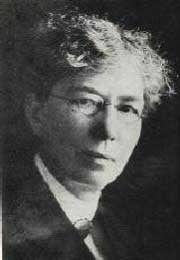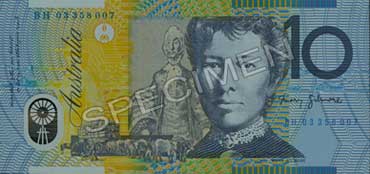Mary Gilmore
From Racist in Paraguay to Humanitarian in Australia
Posted Friday, October 6, 2006
One of the most interesting things about the Australian poet and reformist Dame Mary Gilmore is the story of her involvement in the Paraguay utopian experiment of the 1890's. As the young Mary Cameron, she joined William Lane and his supporters at the Australian outpost of Cosmé in the interior of Paraguay in l895.

The colony flourished for several years, with its own newspaper and with regular social evenings of music, dancing and recitations -- folk traditions brought to Paraguay from Australia. Poet Henry Lawson, who was a special friend of Mary's, nearly joined the project, and there was much interest – some of it mixed – back in Australia in the experiment in "bush socialism."
Along with some laudable ideals, there were strong racist principles in the organisation. Contact with indigenous people was to be strictly avoided, something Mary Cameron accepted.
In general, Mary was not particularly well-liked at Cosmé and she often became embroiled in squabbles with some of the other women. She was once referred to as a "hysterical man-woman" (quoted by Gavin Souter in his book, A Peculiar People), and her status as a spinster for some time did not bring her much sympathy. By the end of her days at Cosmé she was lonely and bitter.

But after her return to Australia this unpopular and predjudiced woman became a loved and respected public figure. What brought this about the change? Dr. Anne Whitehead in her book, Bluestocking in Paraguay, has some insights.
In 1900 Mary and her husband put Paraguay behind them and travelled to Argentina, where there was work in the sheep industry. But here life was even more difficult for Mary than before. She suffered physical illnesses affecting both herself and her son, Billy; extreme loneliness and isolation, with no Spanish language and unable to be with her husband; and an unforgiving cold and windy climate from which there was little respite. These things had a big impact on her.
But what may have been the seminal experience was her confrontation with racial and class predjudice against a young peon she befriended. The young ranch hand was severely punished for fraternizing with her and was expelled from the pemises. He was sent out into the bush poorly dressed for the severe cold, and was later found dead. Mary was deeply upset by this terrible episode of injustice and she never forgot it.
By the time she returned to Australia in 1902 Mary had had many life-changing experiences. The Mary Cameron we read about in Paraguay is very different from the public figure we know in Australia as Dame Mary Gilmore. This woman eventually settled in Sydney and dedicated the rest of her life to her writing and to indigenous and other causes, finding memorable ways to convert her earlier hardships into positive features of Australian cultural and humanitarian life.
Mary-Jane Field










